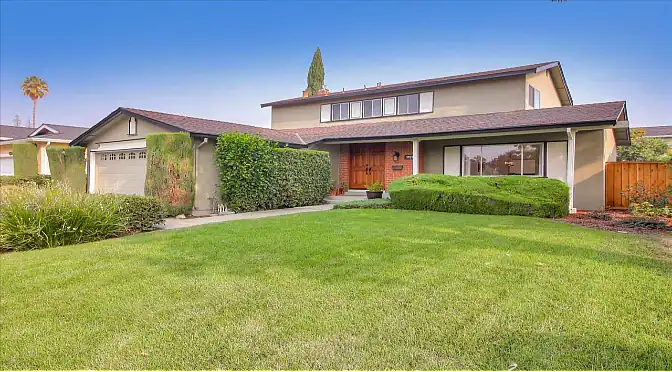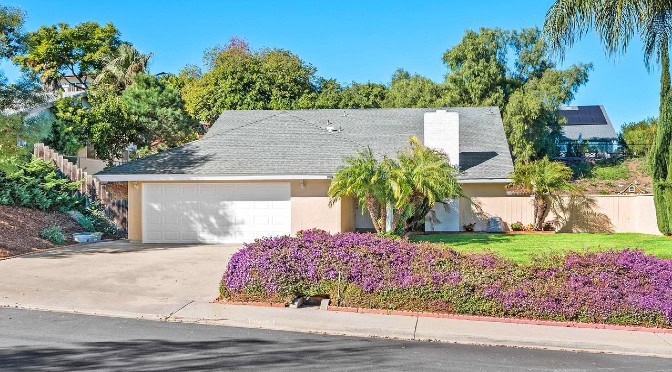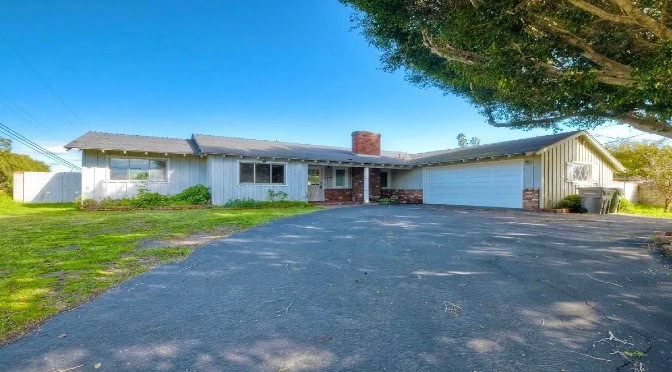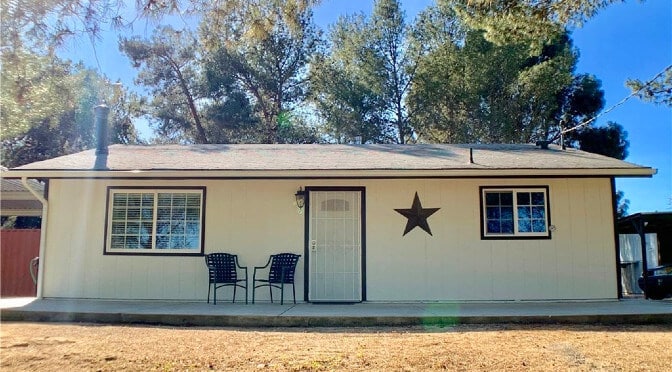
Bridge Loans for Home Purchase in California: Homeowner’s Guide to Rates, Risks and Options
The dream of owning a new home in California often comes with a complex logistical challenge: how do you buy a new house before you sell your current one? In California’s competitive real estate market, where all-cash offers and non-contingent bids dominate, waiting for your current home to sell can mean losing out on your next perfect property. This is the exact scenario where a bridge loan for home purchase becomes a critical piece of the financing puzzle.
This comprehensive guide is specifically tailored for California homeowners seeking temporary financing for an owner-occupied primary residence. We will delve into the mechanics of a bridge home loan, analyze current home bridge loan rates and explore the California bridge loan for home purchase process.
What is a Bridge Loan for a Primary Residence?
A bridge loan is a short-term, high-interest loan designed to “bridge” the financial gap between the purchase of a new home and the sale of an existing one. It is secured by the equity in your current home and/or against the new home being purchased. The bridge loan provides the necessary capital to close on the new property without a sale contingency.
For an owner-occupied primary residence, the bridge loan is a consumer loan, which subjects it to stricter regulations than loans for investment properties. Consumer bridge loans are a special exception that do not require the same type of strict debt to income (DTI) ratio qualification as other consumer purpose loans (traditional long-term home loans).
The Mechanics of Bridge Home Financing – 3 Scenarios
In a typical “buy before you sell” scenario, a bridge loan works by creating a temporary debt structure that may involve one or two loans with three difference scenarios depending on the needs of the borrower:
- Bridge loan against current property: This loan is secured by the current home and is used to access its equity. The funds are typically used to purchase the new property all cash or combined with other cash the buyer has available.
- Bridge loan against new property: If the borrower/buyer has a down payment of at least 30% of the new property being purchased, the bridge loan is secured against the new property being purchased. The borrower contributes the down payment to escrow and the bridge loan lender provides the remaining balance to close on the new home.
- Double bridge loan against both properties: If needed, a bridge loan can be taken out against the current property in order to create a down payment for the purchase of the new property. The residential bridge loan lender can then provide an additional bridge loan against the new primary residence being purchased.
The bridge loan is designed to be repaid quickly, usually within three to twelve months. Once the current home sells the homeowner can use the sales proceeds or refinance the new property into a long-term traditional loan.
This short-term nature is what defines the product, but it also dictates the higher interest rates and fees. The quick access to capital allows you to make a non-contingent offer on your new home, which is a significant advantage in California’s highly competitive real estate market. Sellers in areas like the San Francisco Bay Area, Los Angeles, Orange County, and San Diego often prioritize offers without sale contingencies, making your bid far more attractive and increasing your chances of securing the property. The bridge loan effectively converts you into a cash-like buyer for the duration of the financing.
Bridge Loan Purpose and Regulations
For any California homeowner considering home bridge financing, understanding the regulatory environment is necessary. The bridge loan for an owner-occupied primary residence is a consumer loan, which subjects it to stricter consumer protection regulations than loans for investment properties. This distinction is vital, especially in California, where the loan’s purpose must be the acquisition or construction of a new dwelling. Lenders must be diligent in verifying the intended use of the funds to ensure compliance with state and federal lending laws. This focus on the primary residence ensures that the financing is used for its intended purpose: facilitating the move from one personal home to another, rather than for speculative investment.
Analyzing Home Bridge Loan Rates and Costs
The most significant drawback of a traditional bridge loan is the cost. Because they are short-term, high-risk loans (the lender is relying on the future sale of your home), home bridge loan rates are substantially higher than those for a conventional 30-year mortgage.
Interest Rates
Traditional bridge loans, particularly those offered by private or hard money lenders, often carry high interest rates. While rates fluctuate based on the market, loan amount, loan to value ratio and other factors, current rates for bridge loans for homes in California typically fall into the range of 9.95-10.95%.
Fees and Closing Costs
In addition to high interest, bridge loans come with a full set of closing costs, similar to a traditional mortgage. These costs can quickly add up, making the loan expensive even if you only use it for a few months.
| Loan Fees Overview |
||
|---|---|---|
FEE TYPE |
TYPICAL COST |
DESCRIPTION |
Origination Fee |
1.5% to 2% of the Loan Amount |
Paid to the lender for processing the loan. |
Title and Escrow Fees |
Varies (often 0.5% to 1% of sale price) |
Costs associated with the closing process, title insurance, and escrow services. |
Total Cost Consideration: When factoring in the interest rate and the 1.5% to 2% in origination and closing costs, a traditional bridge loan for home purchase can be a higher cost form of temporary financing.
The Pros and Cons of Bridge Loans
To determine if a bridge loan is the right financial tool for your move, it is essential to weigh the benefits against the significant risks and costs.
Advantages (The “Why”)
- Non-Contingent Offer: This is the primary benefit. It allows you to remove the “sale of current home” contingency from your offer, making your bid competitive with all-cash buyers in California.
- Seamless Transition: You avoid the stress and cost of a double move or temporary housing, as you can move directly from your old home to your new one.
- Speed and Flexibility: Bridge loans can often be approved in 1-2 days and closed within 2-3 weeks. This is much faster than a traditional refinance or home equity line of credit (HELOC), which is crucial in a fast-moving market.
Disadvantages (The “Caution”)
- Higher Cost: The combination of higher interest rates and closing costs makes it a more expensive option.
- Double Payments: You may be responsible for carrying the debt of the bridge loan, the mortgage on your current home, and the bridge loan on your new home simultaneously depending on the bridge loan structure needed by the borrower.
- Sale Risk: If your current home does not sell within the loan term (typically up to 11 months), the entire principal balance of the bridge loan becomes due in a single lump sum, known as a balloon payment. Failure to make this payment can ultimately lead to default, foreclosure proceedings on your current home, or force you to sell the property quickly at a discounted price. This risk is amplified in a cooling market, where the time-on-market for homes can extend beyond the bridge loan’s term. It is crucial to have a robust backup plan and a realistic assessment of your current home’s marketability before committing to this type of financing.
Qualifying for a Bridge Loan in California
Lender requirements for bridge loans for homes are primarily based on the equity in the current property and the future sale of a property.
| Bridge Loan Qualification Requirements |
||
|---|---|---|
QUALIFICATION FACTOR |
TYPICAL REQUIREMENT |
NOTE |
Credit Score |
600+ (often 700+) |
Higher scores typically allow for fast approval. |
Debt-to-Income (DTI) Ratio |
Must qualify to carry the any future debt load of a new mortgage once bridge loan is refinanced (if necessary). |
Traditional lenders must strictly adhere to consumer DTI rules for refinancing of primary residences. |
Equity in Current Home |
Minimum of 30% to 35% equity must remain in home. |
The loan amount is based on the equity you can tap, often up to 65-70% LTV. |
Property Sale Plan |
Must have a clear, credible plan for the sale of the current home. |
The lender’s risk assessment is heavily weighted on the marketability of your current California home. They will analyze comparable sales (comps) and the local market trends to ensure the property is likely to sell quickly and for a price that covers the bridge loan. |
Alternatives to Bridge Loans for Home Purchase A bridge loan is not the only way to solve the “buy before you sell” dilemma. Depending on your financial situation, one of these alternatives may be a better fit. While the bridge loan offers the fastest path to a non-contingent offer, it is prudent to explore all options, especially given the high cost of bridge financing. |
| Alternative Financing Options |
|||
|---|---|---|---|
ALTERNATIVE |
HOW IT WORKS |
PROS |
CONS |
Home Equity Line of Credit (HELOC) |
A revolving line of credit secured by your current home’s equity. |
Lower interest rates than a bridge loan; flexible use of funds. |
Takes time to set up (30-60 days); must be paid off when the home sells. May have prepayment penalties. |
Cash-Out Refinance |
Refinance your current mortgage for a higher amount and take the difference in cash. |
Lower interest rate than a bridge loan. |
Requires a full refinance process; must be paid off when the home sells; may not be available if you plan to sell quickly. May have prepayment penalties. |
Contingent Offer |
Offer to buy the new home contingent on the sale of your current home. |
No extra loan costs or interest. |
Highly unattractive to sellers in a competitive California market; often results in a rejected offer. |
The Strategic Value of the Bridge Loan
Despite the alternatives, the bridge loan remains the most direct and powerful tool for making a competitive offer. In a market where multiple offers are common, a contingent offer (relying on the sale of your current home) is often immediately discarded by sellers. The bridge loan’s primary strategic value is its ability to convert a buyer into a non-contingent, cash-equivalent bidder, which is often the deciding factor in winning a bidding war for a desirable California property. This strategic advantage must be weighed against the financial cost.
Step-by-Step Process: Securing Your Bridge Loan in California
If you decide that a bridge loan is right for you, here is the typical process for a California homeowner:
1. Consult a California Mortgage Broker: Start with a direct lender who specializes in consumer bridge loans for homes and is familiar with the nuances of the California market.
2. Determine Your Equity: The bridge lender will assess the value of your current home (via an appraisal or BPO) and your available equity.
3. Pre-Approval: You will need to be pre-approved for the bridge loan (or double bridge loan) by completing a basic bridge loan application form. The lender will verify your ability to handle the temporary debt load.
4. Secure the New Home: Once pre-approved, you can confidently make a non-contingent offer on your new primary residence and get the property under contract.
5. Close on the New Home: The bridge loan funds are used to close on the new property. You move in.
6. Sell the Current Home: You focus on selling your current home as the bridge loan term begins (typically up to 11 months).
7. Repay the Bridge Loan: Upon the successful sale and closing of your current home, the proceeds are used to pay off the bridge loan in full. If a bridge loan was secured against the new home being purchased, the traditional long-term refinance process can begin.
Conclusion: The Smart Path to Home Bridge Financing
For California homeowners navigating the competitive housing market, a bridge loan for home purchase is a powerful tool. It transforms a risky, contingent offer into a strong, non-contingent bid, giving you the edge you need to secure your next primary residence.
Before committing to any home bridge financing, consult with a licensed California mortgage professional to explore all options. The right financial strategy will ensure your move is seamless, competitive, and financially sound.
Recent Bridge Loans Funded by North Coast Financial
Bridge Loans Resource Guide
California Bridge Loan Request
We will contact you to review the loan scenario and provide a quote.




